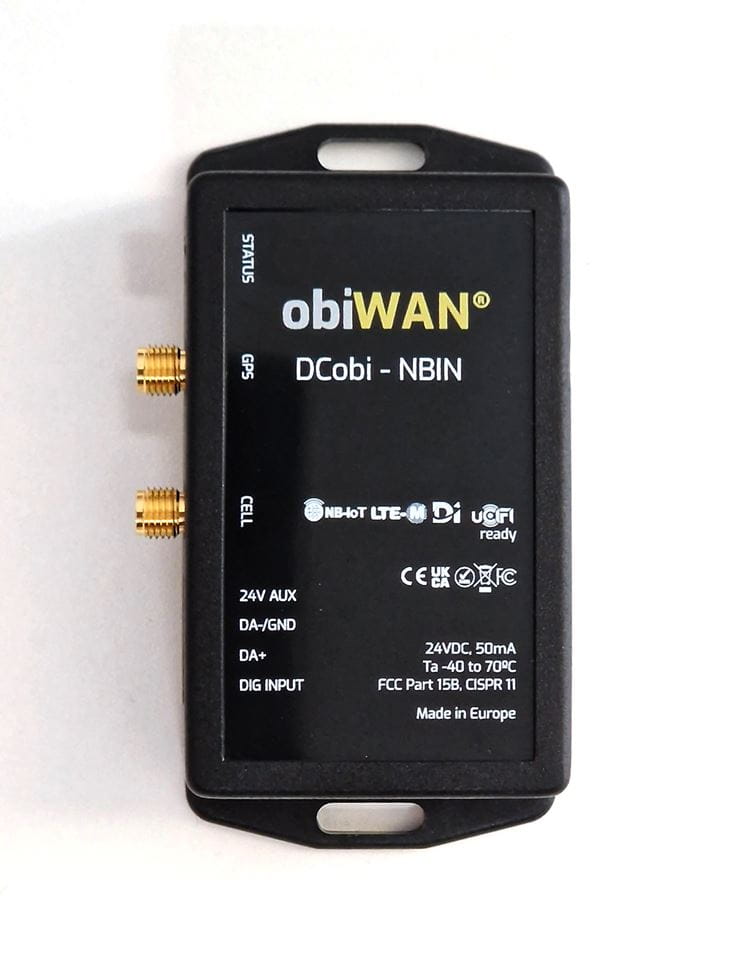Audio
Unleash the full potential of Bluetooth LE Audio with Nordic

Each obiWAN luminaire controller is powered by Nordic Semiconductor’s nRF9160 low power SiP. The multimode LTE-M/NB-IoT modem with integrated RF Front End (RFFE) enables the nRF9160 to transmit the sensor data directly to the Cloud. The company considered a number of wireless technologies before ultimately settling on Nordic-enabled cellular IoT connectivity.
“Wi-SUN, LoRa, and Bluetooth were considered, but LTE-M/NB-IoT cellular connectivity allowed us to minimize data consumption, energy usage, and overall cost, as well as maximize network coverage, bandwidth and data throughput, security, and the interoperability between devices and systems,” explains Miguel Lira, obiWAN CEO.

Further, obiWAN says it is keen to adopt the new features coming in the nRF91 Series cellular modem firmware, such as the ‘pseudo PSM mode’. To make its products even smaller with even lower power consumption, the company is planning to become the first Nordic Semiconductor customer to use Onomondo’s new ‘SoftSIM’ – a software-based, UICC SIM supporting all of the features required for connectivity. SoftSIM is directly integrated into the Nordic nRF Connect SDK. This works for both new radio modules manufactured today and for existing radio modules already deployed in the field with a firmware update.
“As soon as Onomondo launched the SoftSIM, running with the Nordic nRF9160, we immediately decided to test it as this supports our strategy for future developments,” says Lira.
“Having completed the testing phase we are now looking to make SoftSIM available in all our cellular street lighting controllers. We want to use the SoftSIM for several reasons including miniaturization of our devices, decreased cost of our Bill-of-Materials, to maximize the reliability of our products, the possibility of over-the-air SIM changes/updates, increased security, and even lower power consumption.”
The target market for the obiWAN solutions can be segmented based on municipal applications (streets, roads, highways, public places, bridges, and tunnels), enterprise applications (such as supermarkets, shopping malls, retail stores, parking lots, and outdoor eating areas), and sensor applications (environmental, traffic flow, security monitoring, crowd management, smart parking, and others).
“As the communication of these street lighting controllers is based on the existing cellular network and they are truly plug-and-play devices, they remove the complexity in the adoption of intelligent IoT technologies for street lighting control deployments, no matter their scale of implementation—from small towns to major cities—so customers can focus on providing better services, more attractive cities to live in, and increased energy savings,” says Lira. “One of the main reasons, if not the main reason, to use our smart street lighting controllers relies on the energy savings and carbon emissions avoided.
“We rely on the Nordic nRF9160 SiP’s processing power, on both the cellular and GNSS radios, on all its security features, its very low power consumption, and its interfaces and peripherals,” adds Lira. “Our development team is used to Nordic’s excellent technical support and information, forum discussions, development tools, and the high level of expertise from the Nordic engineering team.”
Unleash the full potential of Bluetooth LE Audio with Nordic